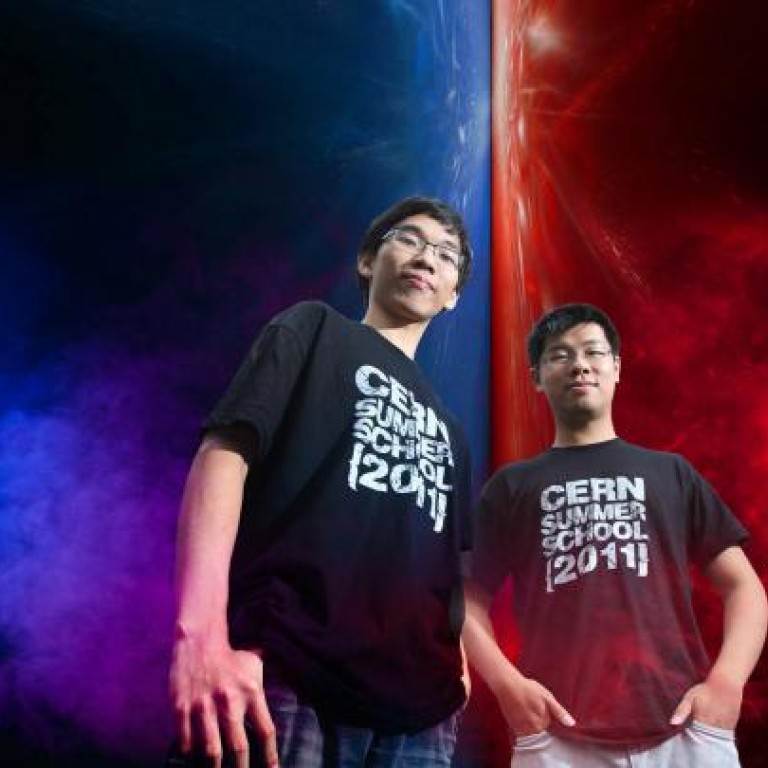
'God particle' Part 2
Two local physics students are excited about a big discovery they helped bring about, writes Joyee Chan
News headlines in early July announcing that scientists in Switzerland may have made a key discovery in the field of physics - called the Higgs boson, or "God particle" - excited two young physicists from Hong Kong because they were involved in projects related to the discovery.
Chinese University students Martin Kwok Ka-hei and John Leung Shing-chau worked at the European Organisation for Nuclear Research (Cern) in Geneva, site of the experiment, last summer. Cern's scientists study how the universe was born and what physical laws regulate it.
And then this week, Cern announced that the discovery had cleared another hurdle - peer review. That means other top physicists have read the findings and say they basically agree with what Cern has done.
The Higgs boson has been described as the missing piece in the universal "jigsaw puzzle". The theory by British physicist Peter Higgs in 1964 is that there is a particle that gives things mass. The search for it has been going on ever since. The discovery announced in July is that Cern found a particle that matches the description of what the Higgs boson is supposed to be. To physicists, this is roughly equal to walking on the moon.
Kwok and Leung were two of the top students worldwide who were invited to Cern last year.
To recreate the early conditions of the universe, scientists cause two beams of protons to collide head-on at very high energy in a specially built loop called the Large Hadron Collider (LHC). New particles will form and leave behind footprints as they quickly decay, and scientists analyse the whole process.
But the same data can be used to study other interesting theories, such as a parallel universe and black holes. Kwok, for example, looked for traces of a particle called a pentaquark during his two months at Cern. Leung worked on the frontline to upgrade the hardware for the LHC.
Quarks are the building blocks of atoms. They are too unstable to exist independently or in bigger groups, but Kwok says scientists theorised that five quarks might have bound together to form a pentaquark during the "Big Bang", when the universe was in an extremely hot, unstable and dense state.
"If there are no laws of physics that rule out the possibility of a pentaquark, it means it is possible," Kwok says. "But if we cannot prove it, perhaps there is a rule still to be discovered."
He says the discovery of the particle that might be the Higgs boson is very encouraging.
Leung worked on a 10-strong team to build prototypes for the components that make up the Cathode Strip Chamber, which is one of the detectors inside the LHC.
The job of testing and sterilising the materials is meticulous and time-consuming because no errors can be tolerated.
"I appreciate how serious my team is with the construction," Leung says. "They encouraged me to take research more seriously."
The two have entered Chinese University's postgraduate programme to further their research in fundamental physics. They are the first students in the city whose experiments, being done locally, are being supervised by professors at Cern. They hope to return to work in Switzerland after obtaining their PhDs.
